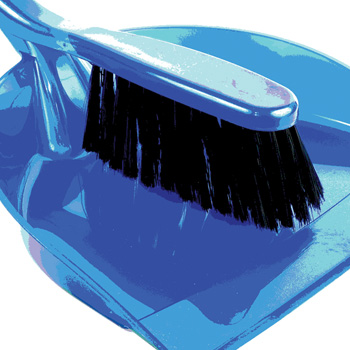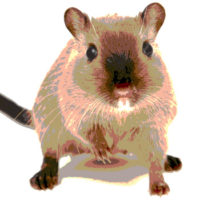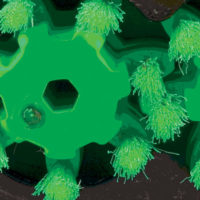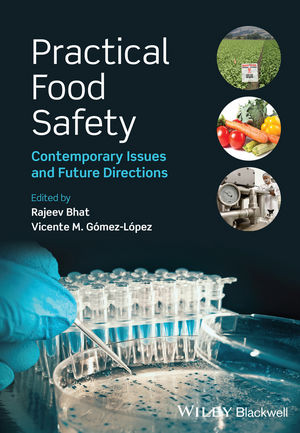Integrated Cleaning and Measurement: A New Approach to Housekeeping and Sanitation

As a sanitarian, I always viewed my professional goals as those of ensuring food safety by constantly applying scientific principles through the application of cost-effective and cost-efficient ongoing preventive measures. So, when I started updating a Sanitation Standard Operating Procedure (SSOP) for a chain restaurant client of mine, the blatantly evident suddenly became the patently obvious. The SSOP, which was originally a fill-in-the-blank document, was neither entirely based on good science nor was it quite fiscally responsible.
Please don’t get me wrong, this document was complete in every way. It met all requirements as outlined in Part 416 of Title 21 CFR. Each section would have resoundingly passed the litmus test of any regulator. But when I started matching the document to the actual operation, it became readily apparent that there were several things seriously amiss. First, the SSOP did not match the practice—or vice versa. The housekeeping and sanitation efforts had a morphogenesis of their own, apart from the written protocols. Had the restaurant staff followed the written protocols, there would be no time for customer care and food preparation. All efforts would go into cleaning, and even that was somewhat questionable. To be sure, if there were ever any liability involved, it would be most difficult to reconcile the actual housekeeping practices with the SSOP. Secondly, almost every procedure detailed in the SSOP seemed to be overkill—but in a rather strange way. Regardless of the soiling associated with the different operations in the restaurant, the SSOP called for a “one size fits all” approach in both the use of cleaning chemicals and methods of application, followed by the front and the back of the house awash in a sanitizer solution. The written protocols placed more emphasis on the vendor of the cleaning compounds than on the soiling in the kitchen and service areas. Third, the section dealing with Maintenance of Sanitation was strictly subjective. There was not one objective measurement listed to evaluate cleaning efficacy. By definition in the SSOP, the “routinely evaluate” provision consisted of two simple parameters: eyeballing “clean” and placing an “×” in multiple boxes on a check sheet. This was punctuated by an occasional, non-specific microbiological assay. Surely, if there had been a failure of any sort in the sanitation efforts at the facility that resulted in a cross-contamination event, the corrective action would have taken on the tone of more overkill, except at a higher level and with more lethal methods. In short, although this SSOP looked good at first glance, it had been constructed a bit askew, with a bias to the cleaning chemicals rather than the outcome needed. Basically, it was unworkable, cumbersome, costly and, to some degree, unscientific.
Granted, I probably make it sound worse than it actually was, but the document did need some serious revamping, together with large doses of objectivity and practicality. I will say that it took an organized and dedicated team effort to get it done. With a lot of good discussion and a huge dose of new ideas, a different approach was taken in its development. The resulting SSOP is now quite comprehensive, and it complements actual practice with almost half the number of pages than that of the original document. Here’s the unique approach we took to get there.
Beginning at the Beginning
Rather than salvage what had been written, we viewed this as a golden opportunity to start afresh—and with basics. We first decided to scrutinize the entire housekeeping and sanitation program by placing emphasis on those areas and surfaces that had to be cleaned for public health reasons. We wanted to ensure that they were properly cleaned when they needed cleaning and with the best tools and safest products. Secondly, we took a critical view of how housekeeping and general sanitation was done with special emphasis on the method of cleaning, the use of chemicals and their related costs. Since general housekeeping and sanitation represents a considerable portion of the cost of doing business, fiscal responsibility is as important as the deed itself. Third, we wanted to monitor the cleaning efforts in such a way that insured adherence to written protocols (once completed) with a priority emphasis on continued improvement. This means that every method and technique, every chemical used and the management of their implementation, including cleaning frequencies, were subject to revision when something better and more efficient was proven to be effective. Finally, we wanted to transition the entire sanitation program to a “green” operation by using low-toxicity products and renewable resources whenever possible and practical.
We started by using as our foundation for the revised SSOP a new concept developed for the housekeeping industry, called Integrated Cleaning and Measurement (ICM). ICM is defined as an open-source protocol in which best practices are evaluated by scientific measurement of cleaning outcomes. Open-source means that the best practices and processes are evaluated by either actual data that demonstrate their effectiveness when compared with others or the more traditional methods that are or were in use. This means that ICM is an enhancement rather than a replacement system, owing to the fact that most cleaning activities in food service remain fairly time- and use-dependent. In short, ICM is a logical tool used to distinguish between cleaning for public health, augmented through disinfection and cleaning for aesthetics, where appearance and absence of malodors are the goals. Objective measurement is the main component that makes this possible.
The ICM Process
Similar to any ongoing improvement process like HACCP, the ICM cycle typically follows a four-step process:
(1) measure, where new and effective tools are used to objectively create a baseline of current practices; (2) compare, where the measurements are used to provide data on how the current housekeeping and sanitation system compares to best practices available and to show where improvements can be implemented; (3) experiment, where new ideas are tried and better ways to achieve a desired cleanliness level are developed; and (4) implement, where the measurements taken for comparison and experimentation with new operating methods, products and processes become part of the operation.
The “measurement” in ICM is the key to this approach. The object of measuring cleaning outcomes is not to set a numerical standard but rather to set baselines for the evaluation of differences in housekeeping methods and monitoring of trends for quality improvement. In this context, “improvement” is the operative word, rather than attaining and maintaining a “minimum performance level.” Objective measurements are a means of assessing chemicals, equipment, application, techniques, cost and management.
Depending on the operation, measurement can be as complex as microbiological or air- and surface-contamination assays, or as simple as using an adenosine triphosphate (ATP)-monitoring system to measure the total biopollution of surfaces for cleaning outcomes. For our purposes, we purchased an ATP-monitoring system that had some flexibility to perform a few other assays as needed. The important thing to remember in using any system of measurement is to eliminate as much bias as possible by using a scientifically based sampling protocol. We used “standard methods” and MIL-STD-105E (ANSI/ASQ Z1.4-2003) as guides for this section. The former was used for actually taking the surface sample, the latter for selecting the number of samples and sampling sites.
Because we also wanted to transition to green cleaning as much as possible in anticipation of new mandates, the ICM open-source system would let us do this without compromising cleaning outcomes as long as we used objective measurements as verification of efficacy. The ICM cycle is best suited to this type of cleaning transition in that all facets of an operation can be evaluated before a final selection is made. Basically, form follows function.
Before we began implementation of the ICM cycle, we needed to redefine the areas and surfaces that were to be cleaned to complement the monitoring system. We knew that disinfection or a greater than five-log reduction of the bioburden was not required in every situation, but we did concede that cleaning outcomes followed a continuum from high-level disinfection to aesthetic acceptance. To assign a level of cleanliness and develop meaningful cleaning protocols, we started by identifying surfaces according to risk of contamination and/or contamination potential. To do this, we borrowed heavily from the NSF/ANSI 170–2008, Glossary of food equipment terminology. In this text, work and non-work surfaces of food equipment are defined by zones that are nicely detailed in section 3.225 of the standard. We expanded on some of the definitions and modified others to meet our needs. The glossary included the following: exterior zone, food zone, heated food zone, non-food zone, refuse contact zone and splash zone. We then set a tentative objective level of cleanliness for each zone according to the perceived risk of foodborne illness by including the frequency and methods of cleaning as well as being mindful of customers’ aesthetic expectations.
For instance, the greater portion of the front of the house was given the designation of “exterior zone” with the exception of the wait station and customer tables. In essence, we considered the wait station and customer tables as “splash zones,” surfaces that are subject either to splash and spillage or other food soiling during normal use by customers and staff and that required sanitization (but not as rigorous as the food-contact surfaces in the kitchen). As a result, no longer were the same wipe cloths and chemicals used for cleaning both the tables and seats by the bussing staff. We also included a “refuse contact zone” as part of the wait-station service area. In so doing, we readjusted both the frequency and methods of cleaning, particularly on those surfaces that could have a public health impact or with any related activities that could potentially raise the risk of cross-contamination. Aside from the goal of improving the housekeeping and sanitation, this exercise resulted in making modifications to the waste-collection area to delimit the potential spread of airborne contaminants. We also included the requirement for the periodic measurement of certain areas using the ATP-monitoring system to determine the frequency of cleaning beyond that which would be considered aesthetically acceptable.
Monitoring Measurements
The ICM measurement component served us well in the kitchen by enabling us to develop an all-encompassing, objective monitoring scheme. Using the ATP-measuring system as the basic tool for ICM, we were able to continually make significant improvements to the total cleaning system for each designated area and surface. We did this by taking repeated measurements that provided us with baseline levels of cleanliness. In addition to the ATP system, we included other monitoring tools, such as a particle counter on a one-time basis to measure the effect of movement as well as traffic patterns in the production areas. To meet the “routinely monitor” component of the SSOP and to complement the ATP-measuring system, we included pH and some quasi-objective, commercially available, spot-test determinants of cleanliness as part of the measurement protocol. In addition, we refined the definition of “clean to sight and touch” by augmenting subjective observations with the use of wooden, cotton-tipped swabs and alcohol-impregnated wipes to help determine aesthetic levels of cleanliness for making modifications in cleaning frequency and methodology.
In addition, with the regular use of the inexpensive ATP-monitoring system on “food zone” surfaces, greater emphasis was placed on reducing the bioburden from the baseline measurement to the lowest possible level in the most economical way. The “heated food zone” definition for the various kitchen surfaces was expanded to include refrigerated areas as well. Because these surfaces are subjected to different use and temperature stresses, they require cleaning strategies that are quite different from food-contact surfaces under ambient temperature conditions. Simple application of the ICM cycle did much to redirect cleaning efforts and materials in these areas.
The entire process of redefining the housekeeping and sanitation efforts by using the ICM system-improvement protocol took several weeks. It is by no means complete; ICM is a continuing program of improvement. But the resulting housekeeping and sanitation efforts could finally be fashioned into a working SSOP that included ongoing objective monitoring and simple documentation. The SSOP now complements the actual physical cleaning. Moreover, it embraces best practices as determined by scientific measurement of outcomes and gives a scientific basis to the selection of cleaning products and processes.
To learn more about the ICM system, simply type “Integrated Cleaning and Measurement” into your computer’s search engine and follow the prompts. You’ll find it well worth the time and effort.
Forensic sanitarian Robert W. Powitz, Ph.D., MPH, RS, CFSP, is principal consultant and technical director of Old Saybrook, CT-based R.W. Powitz & Associates. Contact him at Powitz@sanitarian.com or www.sanitarian.com.
Looking for a reprint of this article?
From high-res PDFs to custom plaques, order your copy today!








